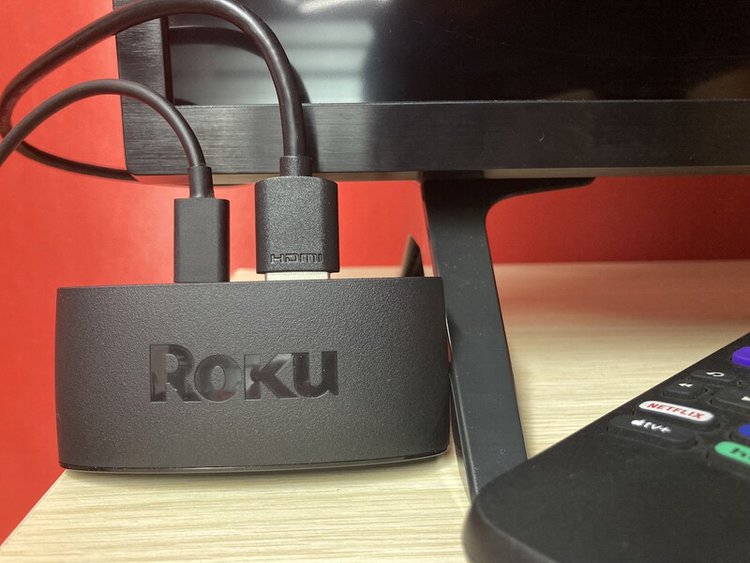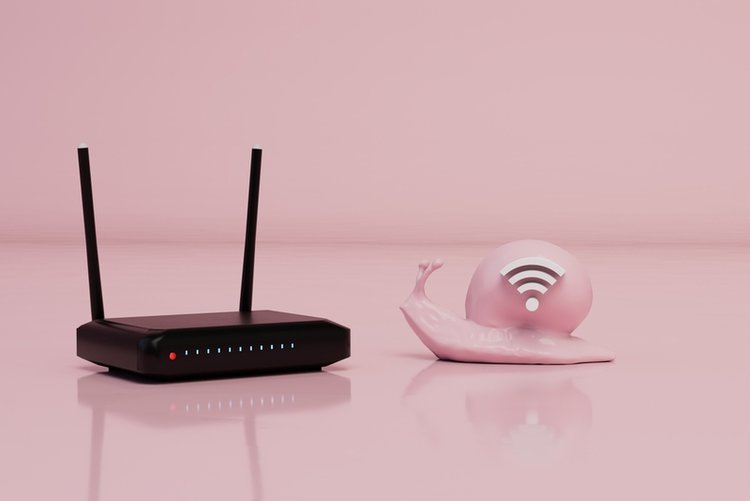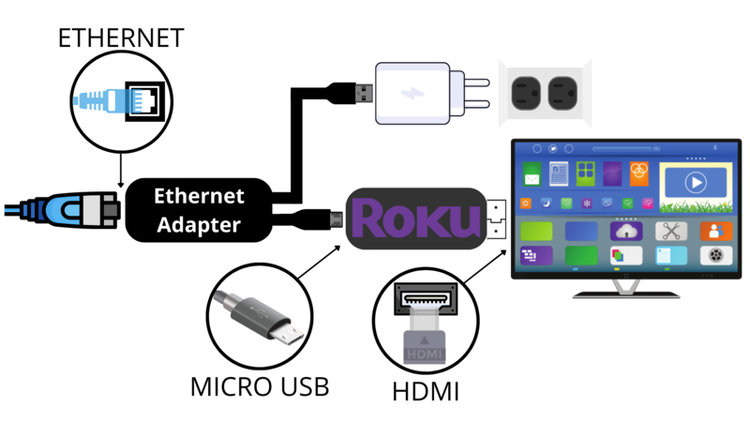Roku Keeps Buffering? Find Out Why & Fix It Fast!

Quick Fixes for You
- Buffering on Roku often results from a slow or weak internet connection; improve performance by checking internet speed or connecting via Ethernet if possible.
- Lowering video quality and bit-rate settings can alleviate buffering: Press Home x5, Rewind x3, Fast Forward x2 > Manual selection > Choose the lower bit rate.
- Update your Roku and individual channels regularly and use an HDMI extender to prevent overheating, which can also cause buffering issues.
When your Roku stalls with buffering, it can disrupt your streaming experience.
Our article zeroes in on troubleshooting this exact issue, offering proven solutions to smooth out your viewing.
Quick Navigation
1. Slow/Weak Internet Connection

If your Roku only buffers when streaming online content, then it’s most likely a result of a slow internet connection. Streaming requires high bandwidth, and videos will lag if your internet connection is too slow. This is the case when streaming on any device, including smartphones and computers.
Wired Connection
Wired internet connections facilitated by an Ethernet cable always foster faster and more stable connections than wireless setups. Some of a network’s strength and stability tend to be lost when the signal is transmitted wirelessly. Using a wired connection will mitigate this problem.
The Roku Ultra and Ultra LT are the only Roku models with built-in Ethernet ports. However, there is a way to use a wired internet connection on Roku models that do not natively support this function.

Wireless Connection
Every Roku device supports a wireless internet connection via Wi-Fi. While Wi-Fi is slower and less stable than wired connections, it’s certainly more flexible since you don’t have to worry about having your router close enough to your TV to be connected to it.
It also fosters a cleaner setup since there won’t be any additional cables cluttering your entertainment center.
Solutions
Lower Stream/Video Quality
Your home’s internet may be too slow to stream content in Full HD or 4K, resulting in buffering. So, it’s best to lower the video quality to ensure it plays smoothly. Higher resolutions also consume more data per hour than lower ones.
To learn how much data a Roku uses, check out our article How Much Data Does a Roku Player Use (per Hour, Month)?
Check out the links below to learn how to adjust popular streaming platforms’ video quality:
In addition to lowering the resolution, consider also lowering your Roku’s bit rate through its settings.
Follow the steps below to adjust your Roku’s bit rate.
Step 1: On your remote, press the Home key five times.
Step 2: Then, press the Rewind key three times.
Step 3: Hit the Fast Forward button two times.
Step 4: Now, you should see the Bit Rate Override page on-screen. From here, select Manual Selection.
Step 5: Choose the lowest bit rate from the list.
Step 6: Then, play a video in the streaming app. If the video quality is too low for your tastes, increase the bit rate to the second or third lowest by following the same steps.
Watch the video below demonstrating how to lower your Roku’s bit rate.
Install a Wi-Fi Mesh System
If your router isn’t strong enough to provide a stable signal to your Roku and other devices, consider investing in a Wi-Fi mesh system, like the TP-Link Wi-Fi Mesh System .
This nifty system automatically switches to the fastest available signal to ensure your devices have access to the best possible connection and won’t buffer.
You can learn how to set up a TP-Link Wi-Fi mesh system by watching the video below. If you have another mesh system brand, refer to its user manual for its specific setup instructions.
Note: While the recommended Wi-Fi mesh system comes with three units, you may need more or fewer units depending on how big the area you want to cover is.
Use an Ethernet Adapter
If you have a Roku Ultra or Ultra LT, you can plug an Ethernet cable directly into its Ethernet port before plugging the other end into your router.
All other Rokus must be connected to an Ethernet port using an adapter that connects to their micro USB port. You can also explore Roku’s list of tried and true Ethernet adapters on their official website.

Check out Roku’s article on connecting devices to Ethernet for a comprehensive list of compatible devices, tried and true adapters, set-up instructions, and troubleshooting tips.
2. Overheating
Your Roku overheating is a result of the device operating at high temperatures for an extended period. You may notice your Roku overheating if you’ve been using it for several hours without giving it a break or if the device isn’t properly ventilated.
Many devices, including Rokus, implement thermal throttling to help cool down the hardware and return it to an acceptable temperature. While efficient, this process also slows down the device’s processor, which leads to buffering.
If your device has overheated, you may notice that your Roku takes longer to launch apps and settings menus. It may also take longer to start up.
You can also tell that your Roku has overheated if its LED status light is red.
Solution
HDMI Extender
Roku sticks are especially prone to overheating if they’re located behind your TV. This area receives minimal ventilation, increasing the risk of overheating.
Luckily, Roku will send you an HDMI extender for free if you fill out this form.
Once you’ve received your free extender, plug your Roku stick directly into its HDMI port. Then, plug the extender’s HDMI cable into your TV. Ensure your Roku is connected to power and you’re good to go!

3. Outdated Software
The app or channel you’re using may have some bugs that are preventing it from running smoothly. Most updates contain some bug fixes that may resolve this problem.
It’s generally a good idea to keep your apps/channels updated anyway since this is the only way to gain access to the latest software patches and features.
Solution
Update Your Roku
Step 1: Hit your Roku remote’s Home button.
Step 2: Go to the Settings in the right-hand menu.
Step 3: Open System.
Step 4: Head to System Update.
Step 5: Click on Check Now. If there are any available updates, they will automatically install. In some cases, this process will cause your Roku to reboot.
Update the Channel
Step 1: Press your Roku remote’s Home button.
Step 2: Highlight the buffering app and hit the Asterisk (✱) button.
Step 3: Choose Check for Updates in the pop-up window. If the app has any pending updates, they will instantly install. Your Roku may also reboot.
Yesenia Achlim is a technical copywriter and editor with a focus on AV equipment. She aims to break down complicated topics and make technology accessible, no matter your technical expertise. When she’s not teaching you how to replace a projector lamp, you can find her reading and baking.


Buffering became an issue for us just recently. Our Samsung TV is new. Our Roku is a year old. Our internet download speeds are great. Our wifi is an Asus mesh system. But we live in the desert and our TV is housed in a cabinet – our Roku was just overheating! I moved the Roku stick to get better ventilation, problem solved. Thank you!
My rumor keeps turning off by itself and restarts by itself. Can I fix this?